If you’re short on time when you visit, here’s what you can see in an hour. Of course, you should start off with the ship itself, the Vasa Museum’s main attraction. Other highlights include:
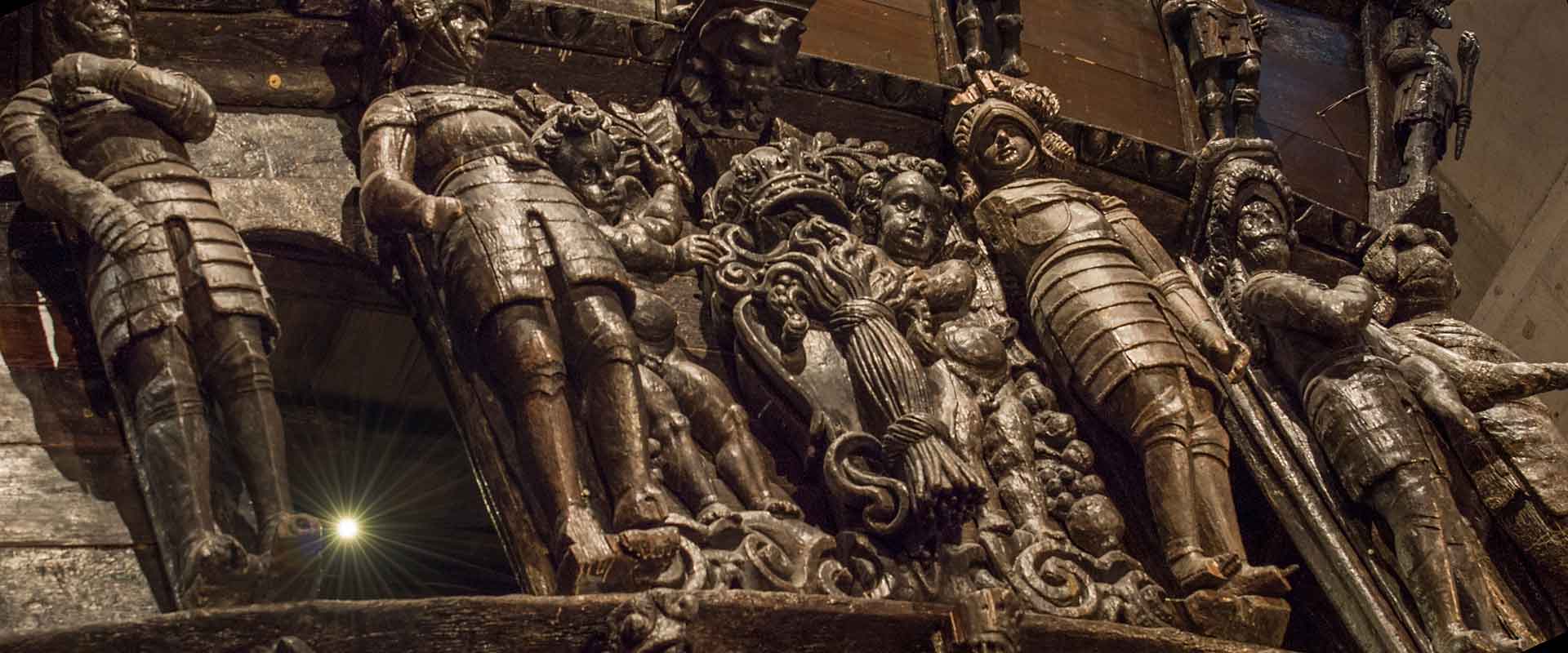
If you’re short on time when you visit, here’s what you can see in an hour. Of course, you should start off with the ship itself, the Vasa Museum’s main attraction. Other highlights include:

What glory as colour! After extensive research it is possible to provide a plausible interpretation of how Vasa looked. The model, in scale 1:10, is adorned with more than 500 sculptures.
Continue to The figurehead - ground floor
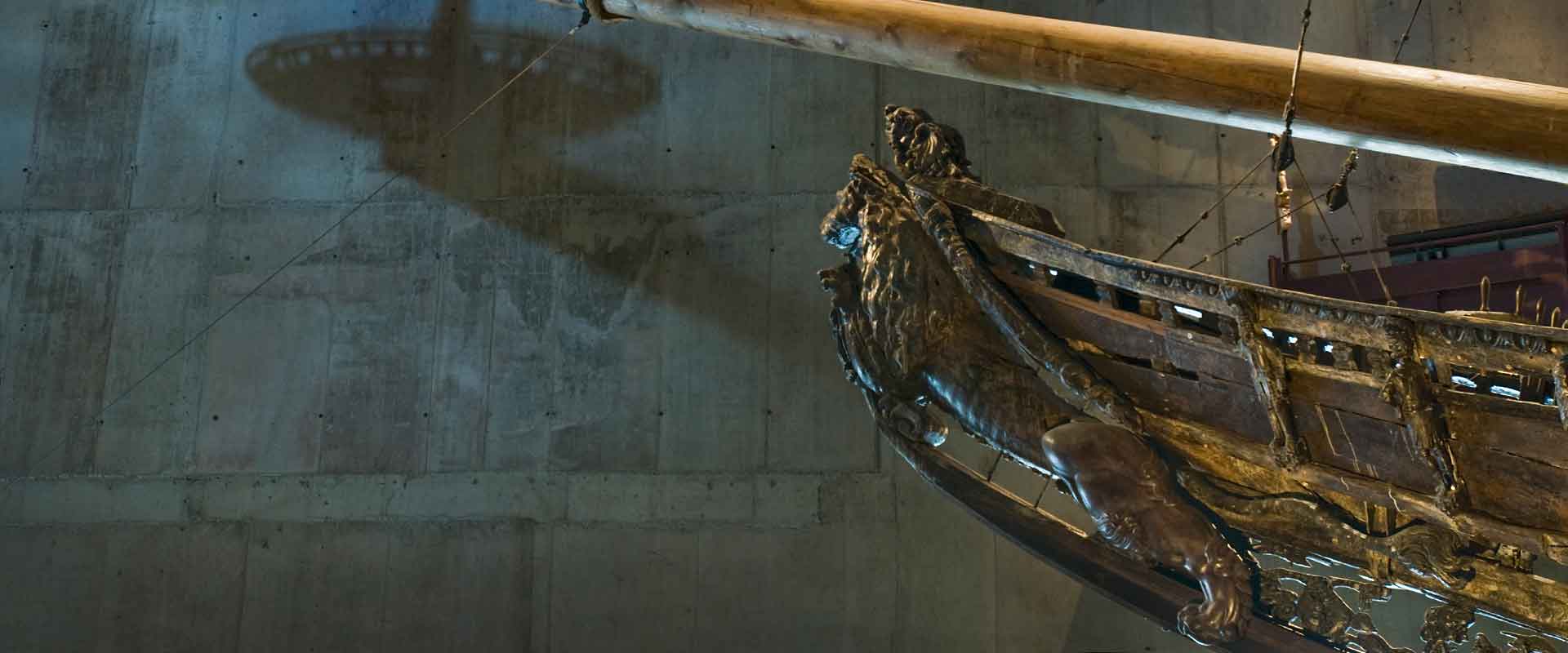
Vasa´s figurehead is a three meter long lion. It holds the Vasa dynasty coat of arms in it´s front paws. The so-called Folkunga lion has been a symbol of the Swedish monarchy ever since the Middle Ages.
Continue to The salvage - ground floor
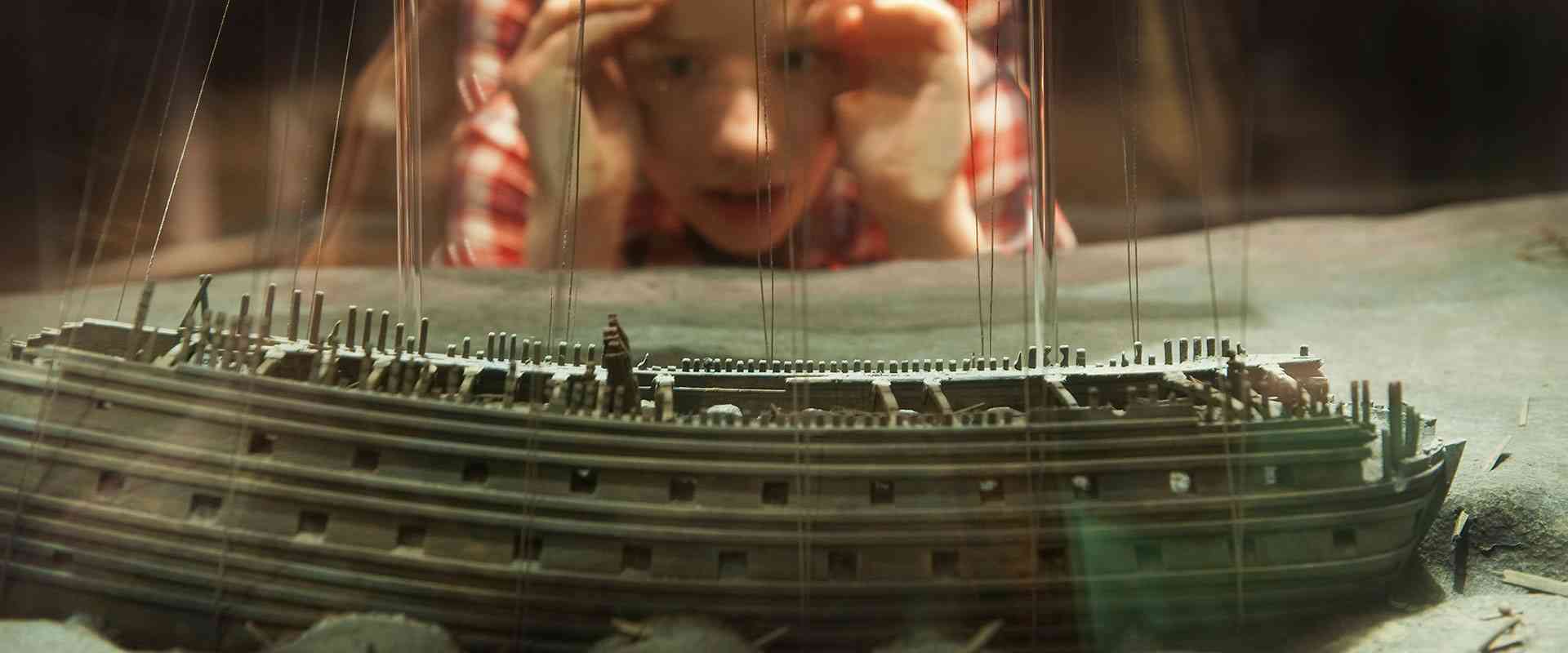
The navy’s heavy divers were able to dig six tunnels through the clay under the ship with special water jets. Steel cables were drawn through the tunnels and attached to two lifting pontoons on the surface, which were able to pull the ship free of the harbour bottom.
Continue to The sinking - ground floor

Vasa sank, after sailing barely 1300 meters. The sails catched the wind, but the ship was tender and heeled over to port, then heeled again, even farther. Water rushed in through the open gunports and the ship's fate was decided.
Continue to Cannon - level five

The exhibition Battle! shows two original cannons from Vasa. Vasa had 64 cannon on board. Each cannon rested on a four-wheeled carriage of oak with iron reinforcement and fittings. The carriage weighed over 300 kg and allowed the gun to be aimed and moved about the deck.
Continue to Life on board - level five
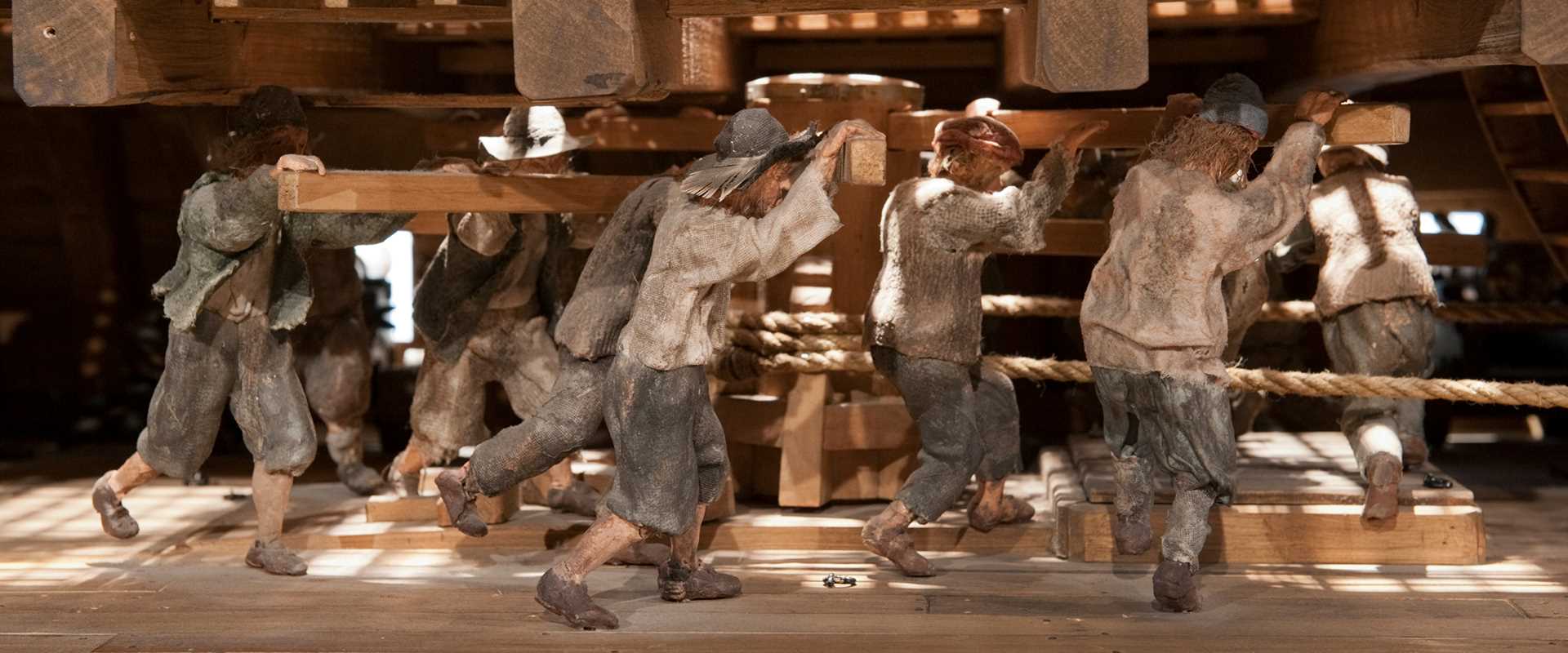
450 people. 800 square metres. Overcrowding would have been enormous. The idea was that they were to sleep, eat and while away time when off duty between the guns in the semi-darkness of the upper and lower gun decks. For many, it was also the place of work.
Continue to Sterncastle - level six
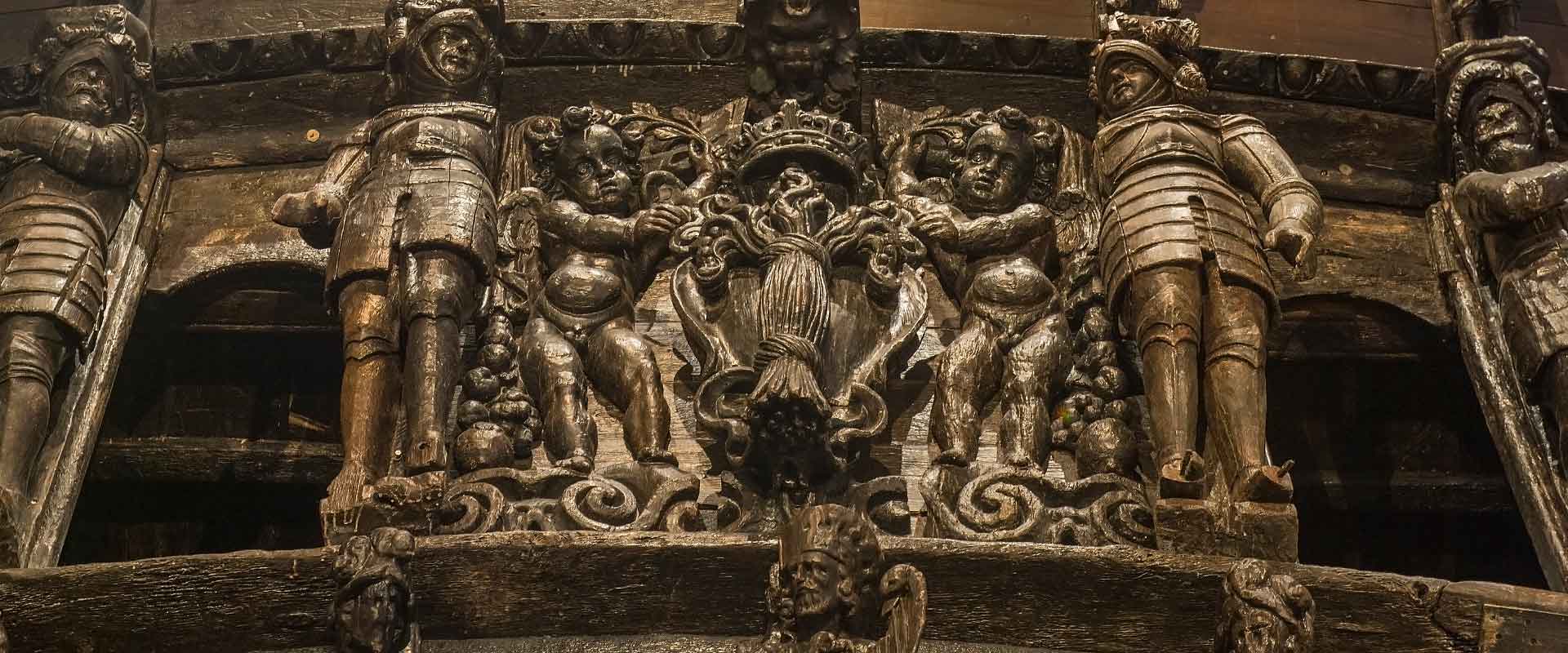
Vasa´s sterncastle is richly decorated and among all the sculptures you can se two angels. They are holding the arms of the Vasa dynasty. The coat-of-arms represents a shef of wheat, a vase, and that is what gave the ship its name.
Continue to Vasa in the future - level two
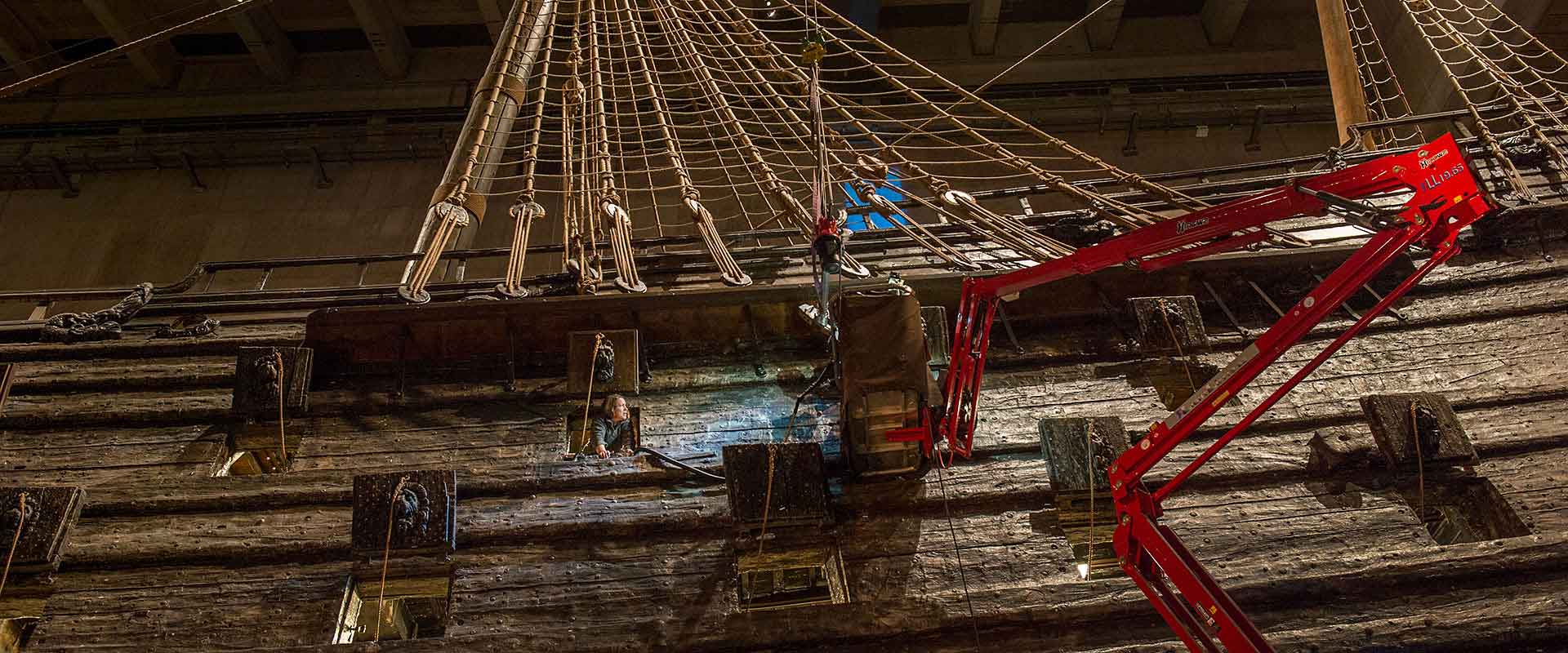
Vasa lay in the grimy waters in Stockholm for 333 years. After all these years in the water the ship was attacked by bacteria and rust.Vasa was slowly decomposing, and is still doing so today, due to a number of different factors. The museum is conducting world-leading research on how to counteract these decomposition processes. And considering the age, we must say that Vasa is in an impressive shape. Our goal is to preserve Vasa for a thousand years.
In the meantime explore some of the the museum highlights here.
Please
accept cookiesfor Prefences, Statistics and Marketing and reload the page to use this functionality.